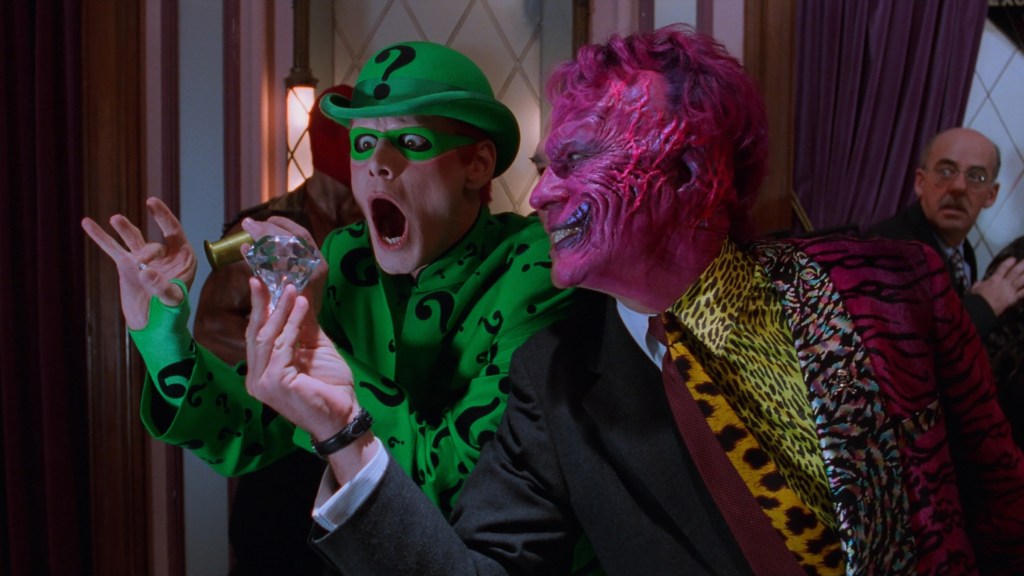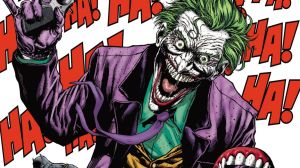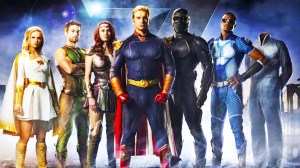The 1990s were an interesting time for Batman movies. Tim Burton’s Batman revolutionized comic book movies and the popularity of the film spawned a franchise that would eventually span four films across nearly a decade. But after 1992’s Batman Returns, Burton left the franchise and filmmaker Joel Schumacher stepped up, taking on Batman Forever and Batman & Robin and to say that those films were met with criticism would be an understatement. Schumacher’s Batman films were very different from Burton’s, bringing in campy, cartoonish sensibilities to a franchise that had started out much darker. The result was very negative responses from audiences and critics alike.
Videos by ComicBook.com
Except 30 years after Batman Forever opened in theaters, many of the criticisms of Schumacher’s Batman films simply don’t hold up anymore. In the decades that have passed, people have looked back at both Batman Forever and Batman & Robin and they see these films in a much different light. As it turns out, sometimes movies really are better than we realize upon first watch — and here are three major criticisms of Schumacher’s Batman that haven’t aged well at all.
3) Schumacher’s Batman Movies Are Too Campy (And Not Nearly Dark Enough)

When Batman Forever was first released, neither the critics nor the audiences were having it. While Burton’s Batman and Batman Returns faced criticism for being too dark, Schumacher’s film got criticism for the opposite. People felt like Batman Forever was too campy and cartoonish and took issue with the movie being lighter and brighter, even funnier and more colorful than the previous two films. People had come to settle into the idea that Batman could only be serious, a concept that to an extent continues to this day when it comes to live-action Batman movies.
However, looking back at Batman Forever (as well as Batman & Robin), it’s a criticism that simply hasn’t held up. Schumacher actually knew and understood Batman comics very well and drew on the Dick Sprang era of Batman comics as well as the 1960s Batman television show when making his films. This lent more color and camp to the movies, which was actually much more in keeping with Batman’s pre-Frank Miller “The Dark Knight Returns” characterization. Contemporary audiences who watch Batman Forever and Batman & Robin now recognize these influences and see them more as a throwback to the comics, something that enhances the viewing experience.
2) Val Kilmer Was a Bad Batman

Filling Michael Keaton’s shoes as Batman was never going to be easy for any actor, but the comparisons between Val Kilmer’s Batman and Keaton’s were brutal. For a long time, many viewers felt that Kilmer did a poor job portraying Batman or found his work to be forgettable, dismissing it much the same way Batman Forever was dismissed by many as being too campy.
Years later, however, viewers are coming around to recognizing that Kilmer actually may have given us one of the most complex and nuanced versions of a live action Batman we’ve ever seen. While Batman Forever is campy and cartoonish, the film also leans into the psychological trauma that is a core element of Bruce Wayne and thus, Batman. Batman Forever in particular explores Bruce’s desire to have a normal life while also having the responsibility of being Batman. Kilmer’s performance does an incredible job of bringing that personal conflict to life and delivers a very compelling, complex version of Batman by humanizing Bruce Wayne in a way we’d never seen before — and frankly haven’t since. Now, many feel like Kilmer’s Batman is one of the best (and we agree.)
1) Schumacher Didn’t Understand Batman

While people thought that Schumacher’s Batman movies were too campy and that Kilmer did a poor job of playing the hero, both of those criticisms distilled into a larger complaint about both Batman Forever and Batman & Robin that can only be summed up as the filmmaker didn’t understand Batman or the world the character inhabited. Chief complaints along these lines beyond the campiness included there being too many villains and that the villains were goofy and exaggerated as well as there being a lot of “excess” in terms of gadgets, suits, and other elements in the films. It was all seen at the time as being part of a cynical ploy for marketing (and toy sales) as well as proof that Schumacher didn’t get the character or the comics.
However, with time fans have come to realize that these were all hallmarks that Schumacher actually understood Batman and comics very well. As was noted previously, Schumacher drew on the Dick Sprang Golden Age era of Batman for much of what he incorporated into Batman Forever and Batman & Robin. That era is one full of unique gadgets, interesting costumes, and even creative vehicles — Sprang notably was responsible for the 1950 redesign of the Batmobile. That era is also the era that gave Batman some of his most colorful villains, including the Riddler. Schumacher incorporating these elements and inspirations into Batman Forever and Batman & Robin show a sharp understanding of the history of the character as well as an appreciation for the fact that Batman hasn’t always been dark, gritty, and brooding. Schumacher’s more colorful and campy movies, when aired with Burton’s darker ones, actually serve to create a more whole version of the iconic character as well as the world he inhabits. It’s something we unfortunately do not see enough of in live-action adaptations of Batman and it’s made Schumacher’s films all the more appreciated for it now.
What do you think? Leave a comment below and join the conversation now in the ComicBook Forum!









